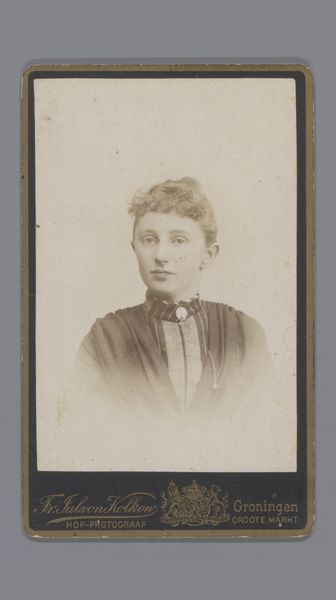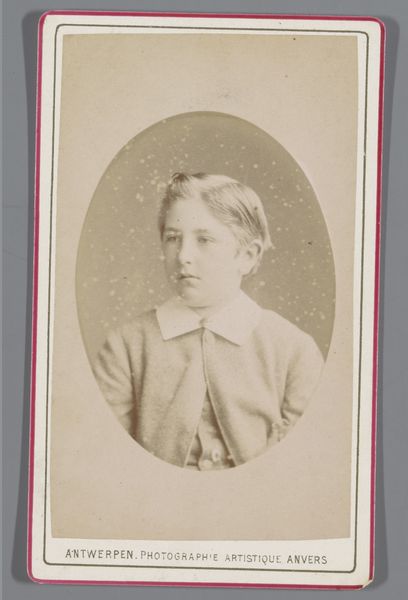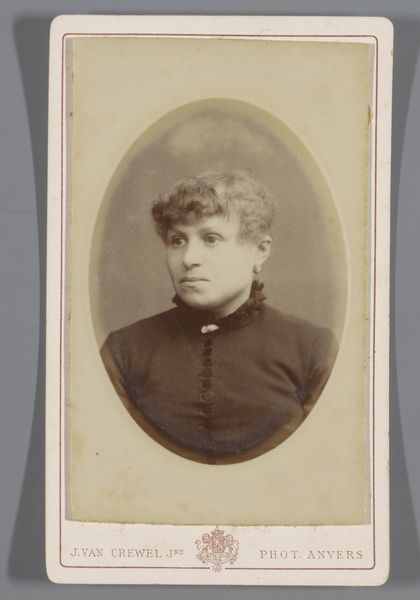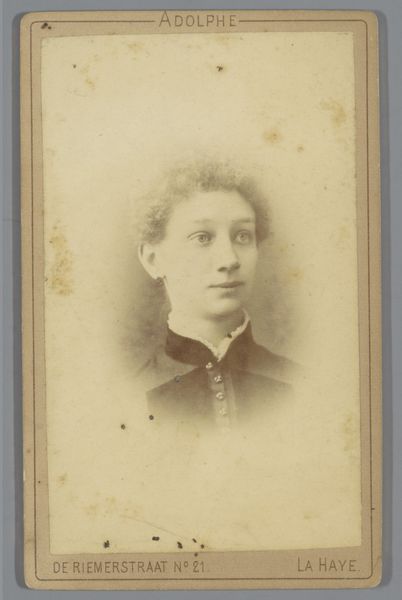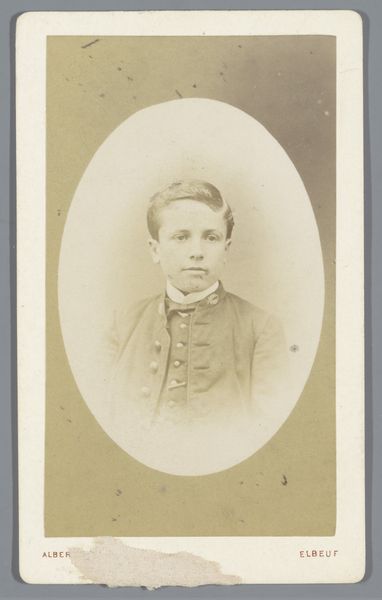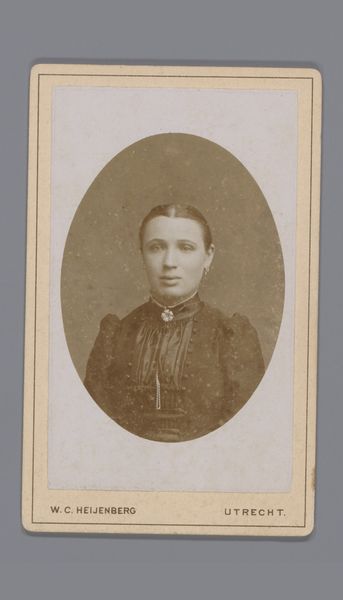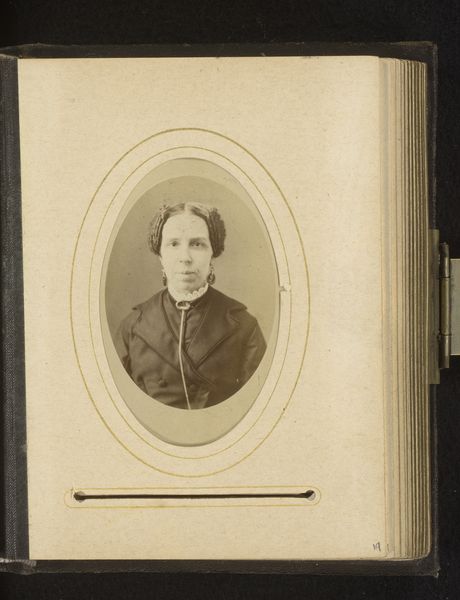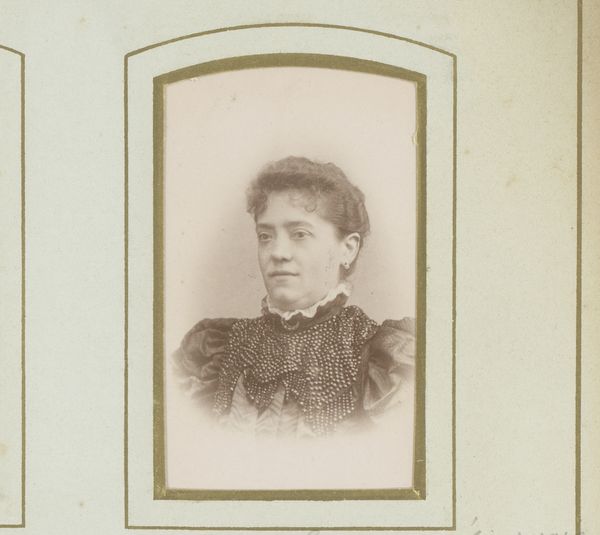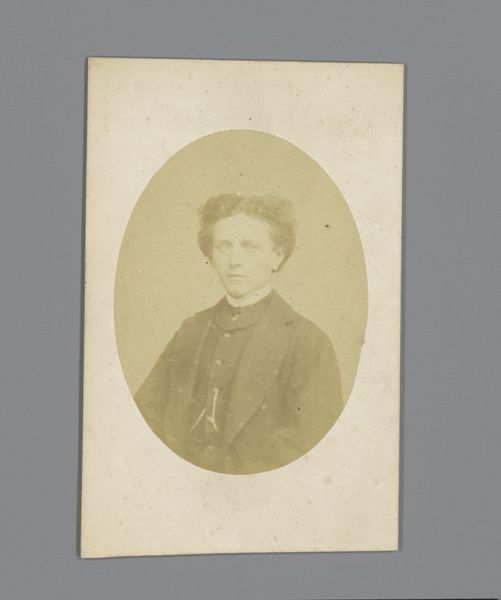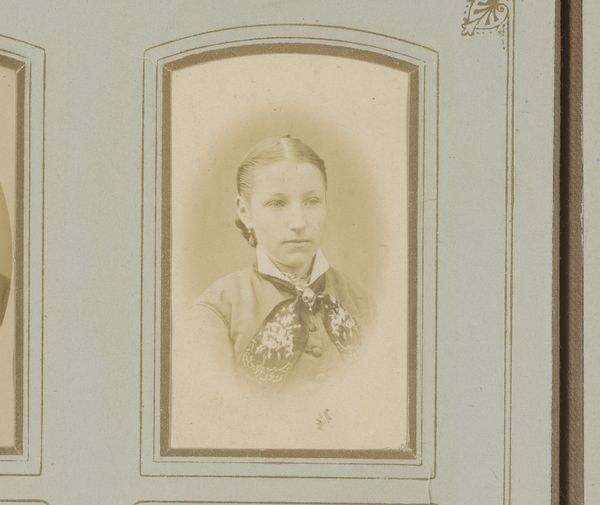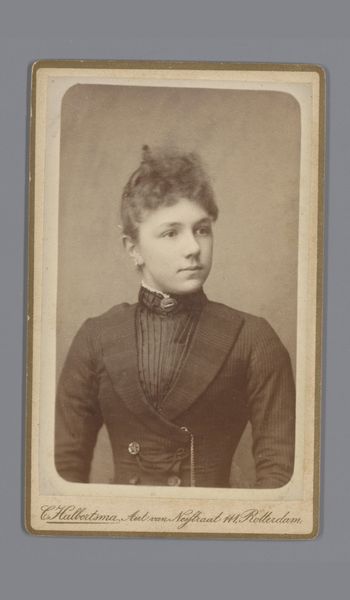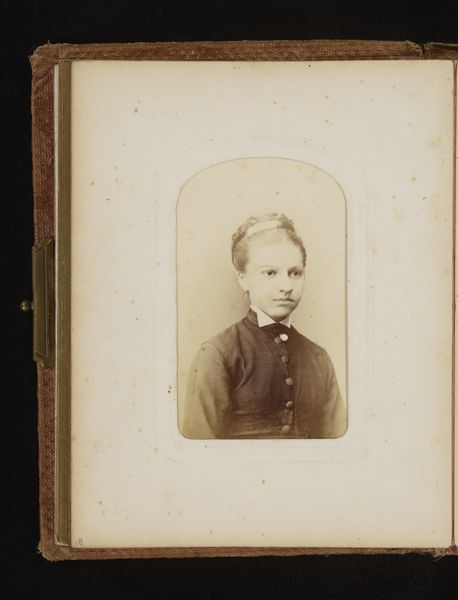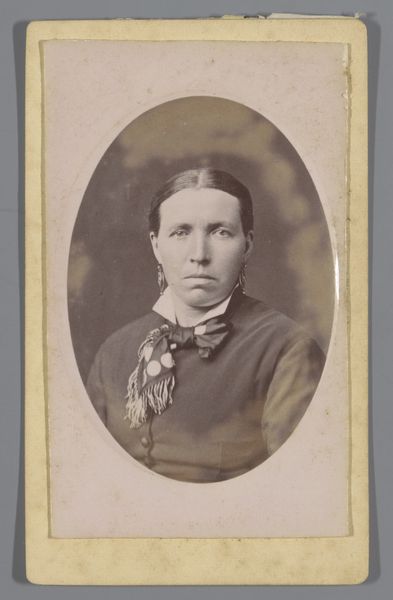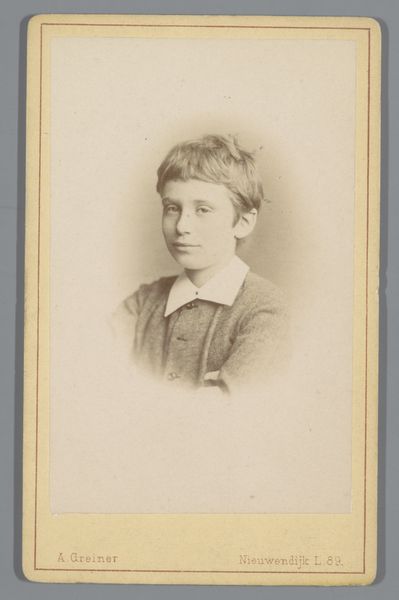
photography
#
portrait
#
photography
#
historical fashion
#
academic-art
Dimensions: height 105 mm, width 63 mm
Copyright: Rijks Museum: Open Domain
Editor: Here we have J. Van Crewel Jeune's photograph, "Portret van een onbekende jonge vrouw," created between 1882 and 1885. There's something quite solemn about this image. What can you tell us about it? Curator: Looking at this portrait, I see a deliberate construction of femininity within a specific socio-historical context. This woman is positioned within the constraints of 19th-century ideals, yet, something about her gaze challenges that passive role. Editor: Challenges it? How so? Curator: The subdued tones and oval framing initially suggest conformity. But look at the slight asymmetry in her features, the way her eyes don't quite meet our gaze directly. There’s a quiet defiance, or perhaps a quiet introspection that complicates the demure presentation. What was expected of young women during this period? Consider the power dynamics at play in portraiture, the male gaze that often dictated representation. Editor: I see your point. Maybe the perceived solemnity is actually a subtle resistance? Curator: Precisely. Photography in this era was becoming more accessible, offering new avenues for self-representation. However, these avenues were still largely governed by social expectations and class structures. Who had access to photography, and what stories were being told? Those are critical questions to ask. Editor: It's fascinating how much can be read from a seemingly simple portrait! Thank you. Curator: Indeed. Examining these historical representations allows us to better understand the complexities of identity formation and the ongoing dialogue between art, society, and individual agency.
Comments
No comments
Be the first to comment and join the conversation on the ultimate creative platform.
